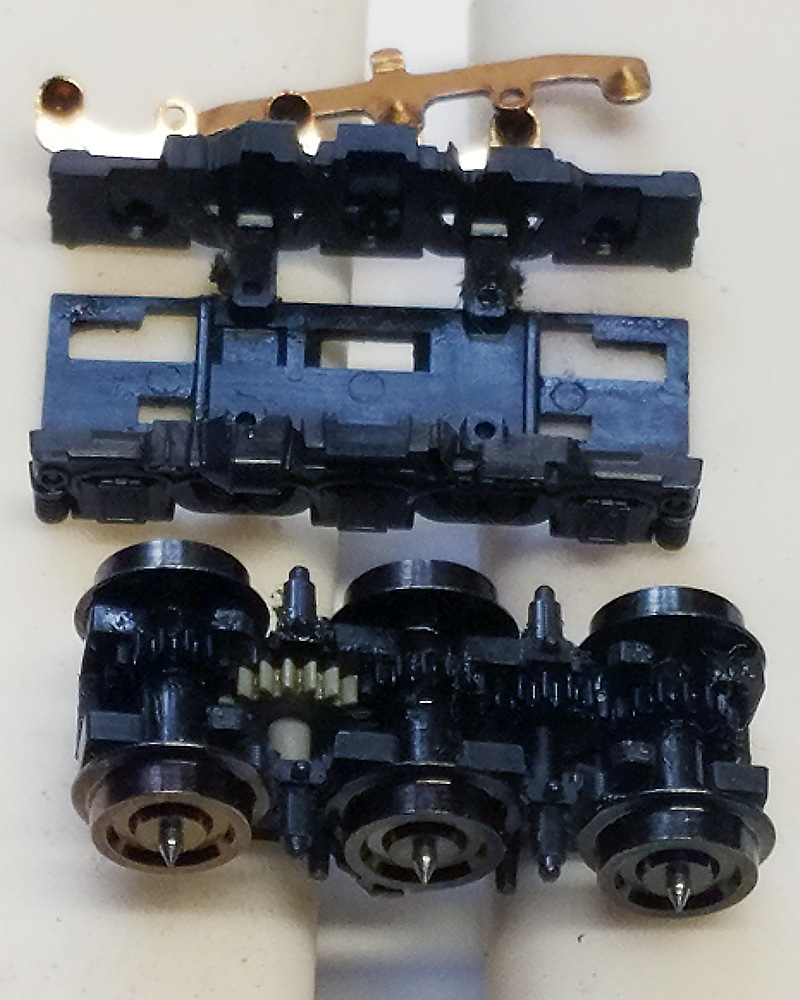
Q: I have an N scale Athearn EMD F45 locomotive with factory DCC and sound, released in 2016. I bought it new, and it worked until I activated different sounds, after which it shorted out. As soon as track power is turned on, my circuit breaker trips. When I tried bypassing the circuit breaker, it shorted out my DCC base station. I disassembled the diesel and traced the problem to a short in a locomotive truck. With the trucks removed from the locomotive, my ohmmeter detects electrical continuity between the left and right wheels. New truck assemblies are not available. What is the fix for this? –Lloyd Horst
A: It’s not easy to diagnose a short in a locomotive truck remotely like this, but I’ll try to give you some pointers. First off, I think the timing of the short coming after you activated different sounds is a red herring. Programming can cause software conflicts, but it doesn’t cause short circuits. I believe this timing is coincidental, or possibly caused by something else that happened at the same time, like moving the locomotive back and forth to your workbench or programming track. So I believe we can eliminate the sounds as the cause.
Since you say the locomotive is new and was working before, I think we can also eliminate a bad wheelset as the cause. Such a problem would have appeared immediately upon putting the locomotive on the track, rather than cropping up later. Here’s how we find out for sure. You say that you detect electrical continuity between the right and left wheels when the trucks are removed from the locomotive. Did you test the wheelsets alone, after removing them from the trucks? This will let you narrow down whether the problem is with the wheelsets or the trucks.
I see two likely causes for a short in a locomotive truck. The first is that something got into the trucks, like a stray coupler knuckle spring, track nail, or metal filings, bridging some contacts within the frame of the trucks. (Lubricating your motor, gearbox, or trucks with a lubricant containing graphite can also cause this problem.) Disassemble the bad truck, look for any conductive detritus, and clean the parts thoroughly before reassembling and lubricating with a tiny drop of plastic-compatible light oil. Make sure the wheelsets go back in the correct orientation, or you’ll introduce an all-new source of short circuits.
Another possibility is that a weak solder joint within the truck, such as to a power pickup wiper, broke, and the loose wire or wiper is contacting the other wiper, metal axle, truck frame, or other metal component. If your short is occurring in only one of the trucks, compare the good and bad ones to see what might be out of place and reconnect it. Good luck finding that short in a locomotive truck.
For detailed instructions on how to disassemble an N scale diesel locomotive truck, check out Steve Miazga’s article “One Good Turn Leads to Another” in our January 2023 issue.
Send us your questions
Have a question about modeling, operation, or prototype railroads? Send it to us at AskTrains@Trains.com. Be sure to put “Ask MR” in the subject.













